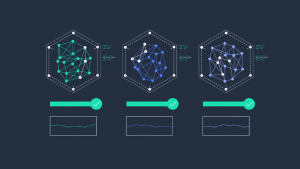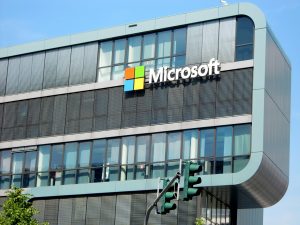Big Data Today? An All-Around Challenge, says Pervasive
![]() Pervasive Software’s Senior Director of Big Data Products and Solutions David Inbar came to theCube to talk with SiliconAngle founder John Furrier and Wikibon co-founder Dave Vellante at IBM’s Information On Demand 2012. When asked about Pervasive Software, Inbar says that they have been an independent company for over 25 years and they make roughly $50 million a year. Some of Pervasive’s database products are embedded in accounting applications, project management applications, and other “transaction centric” applications of their worldwide clients. They also have data integration products that allow for the shuttling of data between applications. These integration products are both on premises and cloud based.
Pervasive Software’s Senior Director of Big Data Products and Solutions David Inbar came to theCube to talk with SiliconAngle founder John Furrier and Wikibon co-founder Dave Vellante at IBM’s Information On Demand 2012. When asked about Pervasive Software, Inbar says that they have been an independent company for over 25 years and they make roughly $50 million a year. Some of Pervasive’s database products are embedded in accounting applications, project management applications, and other “transaction centric” applications of their worldwide clients. They also have data integration products that allow for the shuttling of data between applications. These integration products are both on premises and cloud based.
On the topic of big data, Inbar considers it to be a combination of both structured and unstructured data. This makes it an all-around challenge. Pervasive software started working on the big data challenge before it was actually identified as such. Part of the creations to come out of solution hunting for their clients lead to the development of a parallel dataflow platform that they call DataRush which is already in products they have out in the field with clients currently.
In regards to Hadoop popularity and the development of connectors that so many companies are developing, Inbar feels that connectors are important for certain functions, but that they are not the ultimate solution. Since Hadoop holds all the data, he says that better analytics can be run if they are done over all of the data instead of a sample of it as most connectors do. When analysis is run on all the data there is a higher degree of certainty due to nothing being left out of consideration.
The distinction between batch data and streaming (or real-time) data is blurring causing the way they are handled to converge to a single method. Inbar says that Pervasive views all the data as a feed that can be run thru analytics whether it is in Hadoop, an IBM database, or coming from a live sensor feed. Inbar emphasizes that he feels software should be able to make the source of the data transparent. A business analyst should not be concerned with what the data is running on or coming from. The software should be able to provide the same results regardless of what is running in the background.
Further import is placed on software by Inbar in the discussion of energy consumption related to big data. He mentions that the builders of data centers and hardware developers are both making improvements to energy consumption. He notes that most software does not take advantage of multicore hardware and usually only run with 12% utilization. DataRush will run at 70-80% according to Inbar, and thus will consume less energy to operate. This optimization feature means more speed and efficiency.
David Inbar feels that the exciting part about the future of big data is that there will be so many possibilities we cannot even imagine currently due to the power of machines increasing. These machines will be available for both personal usage and businesses. New startups will be coming about because many of the barriers to business solutions are disappearing. The future holds many opportunities that are yet to be seen.
See the entire interview below.
A message from John Furrier, co-founder of SiliconANGLE:
Your vote of support is important to us and it helps us keep the content FREE.
One click below supports our mission to provide free, deep, and relevant content.
Join our community on YouTube
Join the community that includes more than 15,000 #CubeAlumni experts, including Amazon.com CEO Andy Jassy, Dell Technologies founder and CEO Michael Dell, Intel CEO Pat Gelsinger, and many more luminaries and experts.
THANK YOU













